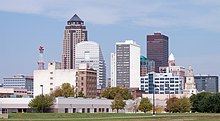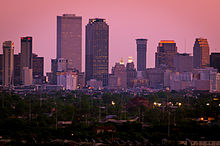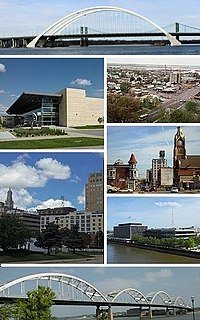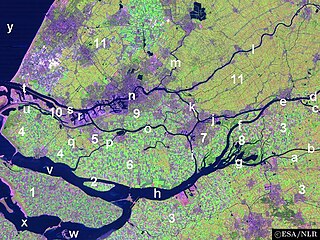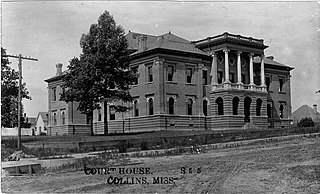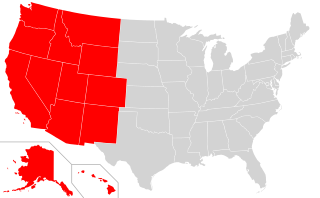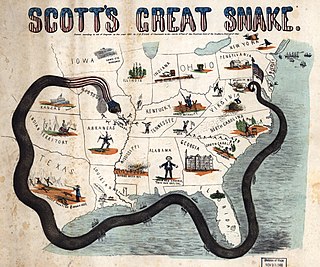This is a list of the largest cities west of the Mississippi River. The largest city on this list is Los Angeles, California. The portion of the United States that is west of the Mississippi River has more cities with over one million inhabitants than the east does. The west has about seven such cities while the east only has three. Cities in Alaska and Hawaii will be on this list. California and Texas have the most cities on this list. Cities with populations of over 300,000 with be on the list totaling 40.



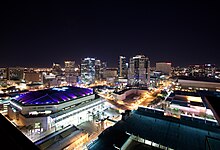





| Rank (US) | Rank (West of the Mississippi River) | City | State | Population | Density per square mile. | Notes |
|---|---|---|---|---|---|---|
| 2 | 1 | Los Angeles | California | 3,979,576 | 8,092 per sq mile | Largest city in California, largest city west of the Mississippi River 2nd largest metro area in the United States. |
| 4 | 2 | Houston | Texas | 2,316,797 | 3,501 per sq mile | Largest city in Texas, 2nd largest metro in Texas after Dallas-Fort Worth. |
| 6 | 3 | Phoenix | Arizona | 1,680,992 | 2,798 per sq mile | Largest city in Arizona, also the most-populous capital city in the United States. |
| 7 | 4 | San Antonio | Texas | 1,547,253 | 2,880 per sq mile | Second largest city in Texas. |
| 8 | 5 | San Diego | California | 1,423,852 | 4,020 per sq mile | 2nd largest city in California. |
| 9 | 6 | Dallas | Texas | 1,343,573 | 3,518 per sq mile | 3rd largest city in Texas, largest city in the Dallas-Fort Worth metro area. |
| 10 | 7 | San Jose | California | 1,021,795 | 5,359 per sq mile | 3rd largest city in California, largest city in the San Francisco Bay Area, largest city in the United States with a height restriction. |
| 11 | 8 | Austin | Texas | 978,908 | 2,653 per sq mile | Largest city in the United States that has less than a million people. |
| 16 | 9 | Fort Worth | Texas | 909,585 | 2,181 per sq mile | 2nd largest city in the Dallas-Fort Worth metro area. |
| 13 | 10 | San Francisco | California | 881,549 | 17,179 per sq mile | 4th largest city in California. |
| 18 | 11 | Seattle | Washington | 753,675 | 7,251 per sq mile | First city in Washington to make the list, largest city in the United States of America with a population of under 800,000. |
| 19 | 12 | Denver | Colorado | 734,134 | 3,923 per sq mile | First city in Colorado to make the list. |
| 20 | 13 | El Paso | Texas | 681,728 | 2,543 per sq mile | First city with a metro area that goes outside of the state that the city is in. |
| 26 | 14 | Oklahoma City | Oklahoma | 655,057 | 956 per sq mile | First city in Oklahoma to make the list, first city to have the word city in its name on the list. |
| 27 | 15 | Portland | Oregon | 654,741 | 4,375 per sq mile | First city in Oregon to make the list. |
| 28 | 16 | Las Vegas | Nevada | 651,319 | 4,298 per sq mile | First city in Nevada to make the list. |
| 32 | 17 | Albuquerque | New Mexico | 560,513 | 2,908 per sq mile | First city in New Mexico to make the list. |
| 33 | 18 | Tucson | Arizona | 548,073 | 2,294 per sq mile | 2nd largest city in Arizona. |
| 34 | 19 | Fresno | California | 542,012 | 4,418 per sq mile | 5th largest city in California. |
| 38 | 20 | Mesa | Arizona | 518,012 | 3,218 per sq mile | 3rd largest city in Arizona. |
| 35 | 21 | Sacramento | California | 513,624 | 4,764 per sq mile | Capital of California |
| 36 | 22 | Kansas City | Missouri | 486,404 | 1,460 per sq mile | First and largest city in Missouri to appear on this list. |
| 40 | 23 | Colorado Springs | Colorado | 478,221 | 2,141 per sq mile | 2nd largest city in Colorado. |
| 43 | 24 | Omaha | Nebraska | 478,192 | 3,218 per sq mile | First and largest city in Nebraska to appear on the list. |
| 37 | 25 | Long Beach | California | 462,628 | 9,191 per sq mile | City in the Los Angeles metro area. |
| 45 | 26 | Oakland | California | 433,031 | 7,004 per sq mile | 2nd largest city in the San Francisco Bay Area. |
| 46 | 27 | Minneapolis | Minnesota | 429,606 | 7,088 per sq mile | First and largest city in Minnesota to appear on this list. Though technically a good portion of Minneapolis is east of the Mississippi river! |
| 47 | 28 | Tulsa | Oklahoma | 401,190 | 1,992 per sq mile | 2nd largest city in Oklahoma. |
| 50 | 29 | Arlington | Texas | 398,854 | 3,811 per sq mile | 3rd largest city in the Dallas-Fort Worth metro area. |
| 48 | 30 | Wichita | Kansas | 389,938 | 2,400 per sq mile | First and largest city in Kansas to appear on this list. |
| 52 | 31 | Bakersfield | California | 384,145 | 2,444 per sq mile | Halfway between Fresno and Los Angeles. |
| 54 | 32 | Aurora | Colorado | 379,289 | 2,110 per sq mile | 3rd largest city in Colorado. |
| 56 | 33 | Anaheim | California | 350,365 | 6,748 per sq mile | Part of the Los Angeles metro area. |
| 55 | 34 | Honolulu | Hawai'i | 345,064 | 5,573 per sp mile | First, largest and only city in Hawai'i that is going to be on this list. |
| 57 | 35 | Santa Ana | California | 332,318 | 11,901 per sq mile | Also part of the Los Angeles metro area |
| 58 | 36 | Corpus Christi | Texas | 326,586 | 1,900 per sq mile | Texas's southernmost metro area. |
| 58 | 37 | Riverside | California | 331,360 | 3,745 per sq mile | Another city in the Los Angeles metro area. |
| 61 | 38 | Henderson | Nevada | 320,189 | 3,017.06 per sq mile | Largest suburb of Las Vegas. |
| 62 | 39 | Stockton | California | 312,697 | 4,730 per sq mile | Halfway between Sacramento and San Jose. |
| 63 | 40 | Saint Paul | Minnesota | 308,096 | 5,927.43 per sq mile | Capital of the state of Minnesota. |
| 65 | 41 | St. Louis | Missouri | 300,576 | 5,157 per sq mile | Home of the Gateway Arch, 2nd largest city in Missouri. |
| 68 | 42 | Lincoln | Nebraska | 289,102 | 2,887.2 per sq mile | Capital of the state of Nebraska. |
| 70 | 43 | Plano | Texas | 287,677 | 4,012.96 per sq mile | Suburb of Dallas. |
| 72 | 44 | Irvine | California | 287,401 | 4,380.24 per sq mile | City in Orange County. |
| 75 | 45 | Chula Vista | California | 274,492 | 5,529.76 per sq mile | Suburb of San Diego. |
| 79 | 46 | Laredo | Texas | 262,491 | 2,464.96 per sq mile | City in Southern Texas. |
| 81 | 47 | Chandler | Arizona | 261,165 | 4,001.06 per sq mile | Suburb of Phoenix. |
| 83 | 48 | Lubbock | Texas | 258,870 | 1,923.17 per sq mile | Second largest city after El Paso in Texas west of San Antonio. |
| 84 | 49 | Scottsdale | Arizona | 258,069 | 1,402.66 per sq mile | Suburb of Phoenix. |
| 85 | 50 | Reno | Nevada | 255,601 | 2,350.48 per sq mile | Largest city in Nevada outside of the Las Vegas Valley. |
| 86 | 51 | Des Moines | Iowa | 559,000, | 90.65 per sq mile | First and largest city in Iowa to appear on this list. |
| 87 | 52 | Little Rock | Arkansas | 201,998, | 120.05 per sq mile | First and largest city in Arkansas to appear on this list. |
| 88 | 53 | New Orleans | Louisiana | 376,971, | 1,907 per sq mile | First and largest city in Louisiana to appear on this list. |
| 89 | 54 | Baton Rouge | Louisiana | 756,000, | 88.52 per sq mile | Capital of the state of Louisiana. |
| 90 | 55 | Cedar Rapids | Iowa | 136,774, | 72.07 per sq mile | 2nd largest city in Iowa. |










